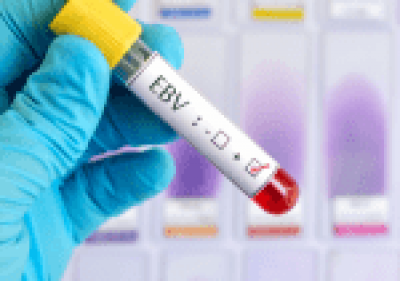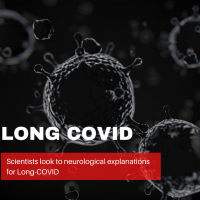Epstein-Barr Virus (EBV) and the Link with Mystery Illnesses

Article Summary
The Epstein-Barr Virus (EBV), a common virus infecting up to 95% of adults by age 40, often goes unnoticed due to its mild or absent symptoms. Despite its stealthy nature, EBV can persist in the body in a dormant state and may reactivate later, triggering or worsening autoimmune conditions such as chronic fatigue syndrome, fibromyalgia, lupus, and multiple sclerosis (MS). This virus spreads through saliva, blood transfusions, and other bodily fluids, establishing itself within immune cells and potentially contributing to immune system dysfunction. Recent studies have highlighted a strong link between EBV and Mast Cell Activation Syndrome (MCAS), a disorder where immune cells become overly active, causing widespread symptoms across different body systems.
The relationship between EBV and autoimmune diseases is complex and involves several mechanisms. Molecular mimicry leads the immune system to mistakenly attack the body while targeting EBV, while bystander activation and cryptic antigens further exacerbate immune dysregulation. The virus may also interact directly with mast cells, promoting inflammation and oxidative stress, two hallmarks of MCAS. Addressing chronic EBV infections and their related autoimmune impacts requires a multifaceted approach. Functional Medicine emphasizes identifying underlying causes and employing natural strategies like supplements, stress management techniques, and lifestyle modifications to bolster the immune system and promote healing.
Managing EBV naturally includes the use of immune-supportive supplements such as Lysine and Lauricidin, alongside stress-relieving practices like yoga, meditation, and deep breathing. Testing for EBV antibodies can help determine the virus’s activity, guiding personalized treatment plans. By combining immune system support, stress management, and lifestyle changes, individuals can reduce EBV reactivation and its associated health challenges. This holistic approach allows for symptom relief and the potential to reverse autoimmune conditions linked to chronic EBV infections.
Want to know more details?
Check out the full article below.
Unraveling the Mystery of Chronic Epstein Barr
The Epstein-Barr Virus (EBV), a member of the herpes family notorious for causing mononucleosis or the “kissing disease,” might be hiding in your body, potentially wreaking havoc on your immune system. Surprisingly common, up to 95% of U.S. adults have contracted EBV by the age of 40. However, many individuals might be oblivious to ever having had the virus, as symptoms can be mild or absent. What’s more intriguing is the strong correlation between EBV, autoimmune conditions, and Mast Cell Activation Syndrome.
EBV: The Silent Invader
EBV spreads through body fluids like saliva, sexual activities, organ transplants, and blood transfusions. Most people contract it in childhood or adolescence, with half of all children having it by age 5. While the majority may not develop mononucleosis or show symptoms, the virus remains within the body, often undetected. This stealthy behavior allows EBV to remain dormant for years before reactivating, potentially triggering or exacerbating autoimmune conditions.
The Autoimmune Spectrum
Autoimmune diseases affect millions globally, with over 23.5 million Americans grappling with various conditions. EBV, extensively studied for its connection to autoimmunity, correlates with conditions such as chronic fatigue, lupus, fibromyalgia, Hashimoto’s, Graves’ disease, and multiple sclerosis (MS). The link between EBV and MS is particularly strong, with 100% of people with MS having EBV, while those without the virus rarely develop the condition.
The Connection: EBV and Autoimmunity
Understanding how EBV contributes to autoimmune diseases involves exploring theories like molecular mimicry, bystander activation, and cryptic antigens. Molecular mimicry occurs when the immune system mistakenly attacks body tissues while targeting an infection, leading to autoimmune responses. Bystander activation involves the virus invading organs, causing the immune system to damage healthy tissues in the process. Cryptic antigens involve the virus hijacking cells’ DNA, hiding from the immune system while potentially causing autoimmune conditions.
Testing for EBV
Diagnosing EBV involves testing for antibodies and viral DNA. An EBV antibody panel and DNA test can provide insights into past exposure and active infection. The conventional approach to treating EBV includes antiviral drugs, steroids, and immunosuppressive drugs. However, these treatments often fall short for chronic EBV, causing side effects and complications.
Epstein Barr Virus (EBV) and
Mast Cell Activation Syndrome (MCAS)
Epstein Barr Virus (EBV), a member of the herpesvirus family, has long been recognized as a significant player in various medical conditions, notably infectious mononucleosis. Meanwhile, Mast Cell Activation Syndrome (MCAS) is a relatively newly understood disorder characterized by the inappropriate activation of mast cells, leading to a wide array of symptoms affecting multiple organ systems. While seemingly distinct at first glance, emerging research has illuminated a fascinating link between EBV and MCAS, shedding light on the intricate interplay between viral infections and immune dysregulation.
Epstein Barr Virus (EBV)
In many cases, EBV infection occurs asymptomatically or manifests as mild symptoms resembling the common cold. However, in some instances, particularly during adolescence or young adulthood, EBV infection can lead to infectious mononucleosis, characterized by symptoms such as fever, sore throat, swollen lymph nodes, and fatigue. After primary infection, EBV establishes lifelong latency within B lymphocytes, persisting in a dormant state within the host’s immune system.
Deciphering Mast Cell Activation Syndrome (MCAS)
MCAS, on the other hand, represents a complex immune disorder characterized by the aberrant activation of mast cells—the primary effector cells of the innate immune system. Normally, mast cells play a crucial role in orchestrating the body’s defense against pathogens, participating in processes such as allergic reactions and wound healing. However, in individuals with MCAS, mast cells become hyperresponsive, releasing excessive amounts of pro-inflammatory mediators such as histamine, leukotrienes, and cytokines upon stimulation. This dysregulated immune response gives rise to a myriad of symptoms spanning across multiple systems, including the skin, gastrointestinal tract, cardiovascular system, and respiratory system.
The Link Between EBV and MCAS
Recent studies have provided compelling evidence suggesting a potential link between EBV infection and the development or exacerbation of MCAS. One proposed mechanism involves the ability of EBV to dysregulate the immune system, leading to aberrant mast cell activation. EBV achieves this by evading immune surveillance mechanisms and manipulating host immune responses, ultimately promoting chronic inflammation and immune dysfunction. Additionally, EBV may directly interact with mast cells or other immune cells, triggering their activation and perpetuating the inflammatory cascade characteristic of MCAS.
Furthermore, research has highlighted the role of chronic viral infections, including EBV, in contributing to systemic inflammation and oxidative stress—two hallmark features of MCAS. Persistent immune activation induced by EBV may fuel the release of inflammatory mediators and reactive oxygen species, further exacerbating mast cell activation and perpetuating the cycle of inflammation and tissue damage seen in MCAS.
Clinical Implications and Future Directions
Recognizing the link between EBV and MCAS holds significant clinical implications for diagnosing and managing both conditions. Patients presenting with symptoms suggestive of MCAS, particularly those with a history of EBV infection or reactivation, may benefit from targeted screening and monitoring for MCAS-related markers.
Natural Strategies to Tackle EBV
Supporting the immune system is key to addressing EBV naturally. Supplements like Lysine, Lauricidin, and Humic Acid can aid in immune support. Additionally, stress management plays a crucial role, as stress weakens the immune system, making latent infections more likely to activate.
Stress-Relieving Strategies
Incorporating stress-relief practices into daily life can make a significant difference. Techniques such as deep breathing, listening to music, gentle exercise like yoga, tai chi, and meditation, along with adrenal support supplements, can help manage stress and enhance overall well-being.
The Road to Recovery
Reversing autoimmunity linked to EBV involves a holistic approach that addresses underlying infections, supports the immune system, and manages stress. Testing for EBV antibodies is crucial for understanding the current status of the infection. By combining natural supplements and stress-relief strategies, individuals can send EBV back into dormancy, remain symptom-free, and potentially reverse autoimmune conditions.
The Epstein-Barr Virus, often underestimated as the cause of mononucleosis, emerges as a significant player in the realm of autoimmune diseases. As research delves deeper into the intricate connections between EBV and autoimmunity, individuals can empower themselves with knowledge, proactive testing, and natural strategies to manage and potentially overcome the challenges posed by chronic EBV infections. With the right approach in Functional Medicine, it becomes possible to unravel the mysteries surrounding EBV and reclaim one’s health from the clutches of autoimmune conditions.
References
-
Bjornevik, K., et al. “Longitudinal Analysis Reveals High Prevalence of Epstein-Barr Virus in Multiple Sclerosis.” Nature, vol. 603, 2022, pp. 308–314. https://www.nature.com/articles/s41586-022-04469-9
-
Brennan, R. M., et al. “The Role of Epstein-Barr Virus in Autoimmune Diseases.” Frontiers in Immunology, vol. 11, 2020, article 369. https://www.frontiersin.org/articles/10.3389/fimmu.2020.00369/full
-
Fritsch-Stork, R. D., et al. “Epstein-Barr Virus and Systemic Lupus Erythematosus.” Arthritis Research & Therapy, vol. 18, 2016, article 273. https://arthritis-research.biomedcentral.com/articles/10.1186/s13075-016-1178-2
-
Akin, C., et al. “Mast Cell Activation Syndrome: Proposed Diagnostic Criteria.” The Journal of Allergy and Clinical Immunology, vol. 126, no. 6, 2010, pp. 1099–1104. https://www.jacionline.org/article/S0091-6749(10)01275-8/fulltext
-
Leonard, N., et al. “Epstein-Barr Virus and Its Association with Chronic Fatigue Syndrome.” Current Opinion in Virology, vol. 40, 2020, pp. 73–80. https://www.sciencedirect.com/science/article/abs/pii/S1879625720301008




